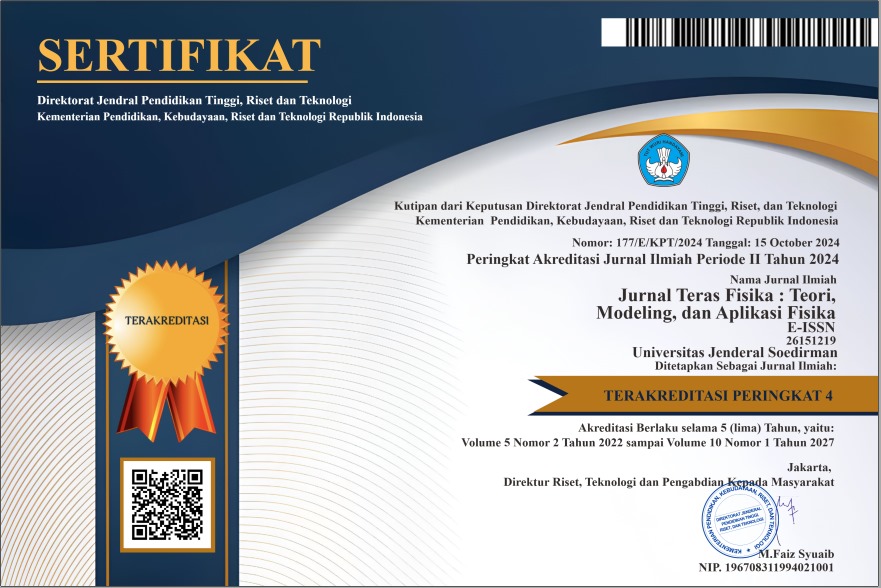Kajian struktur morfologi, gugus fungsi, dan sifat adsorpsi dari karbon aktif kulit singkong (manihot esculenta crantz)
Abstract
This study investigated the effect of carbonization temperature on the morphological characteristics, porosity, and adsorption of activated carbon derived from cassava peel (Manihot utilissima). The ash content, in the charcoal indicating the presence of metal oxides, decreased with increasing carbonization temperature, at lower temperatures 42.59% and 13.64% at higher temperatures. However, at 300 °C, an abnormal increase in ash content was observed. The volatile matter content, which represents the presence of non-carbon substances that affect the adsorption efficiency, increased with temperature, ranging from 57.40% to 86.36%. Morphological analysis revealed that higher carbonization temperatures increased pore formation due to the decomposition of organic compounds. Functional group analysis confirmed the presence of O-H, C=C, C-H, and C-O bonds, indicating lignocellulosic and hemicellulose components. Adsorption studies at a wavelength of 665 nm showed that excessive heating can cause structural degradation, thereby reducing the adsorption efficiency. However, increasing the carbonization temperature generally increases the pore development and surface area, thus increasing the adsorption capacity. These findings provide valuable insights into optimizing carbonization conditions to improve the performance of cassava peel-based activated carbon for adsorption applications








